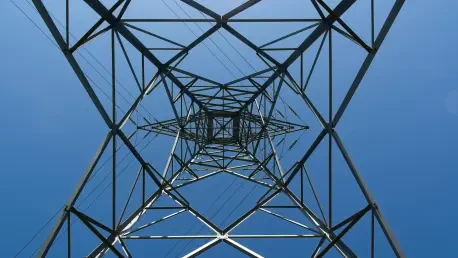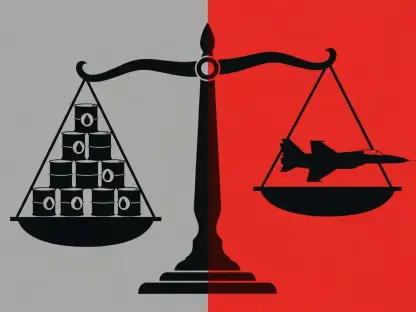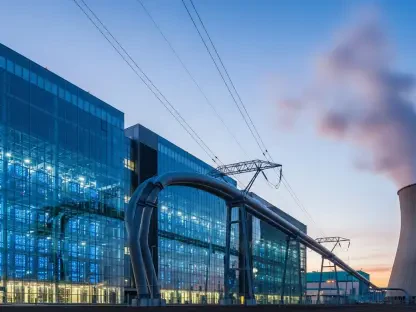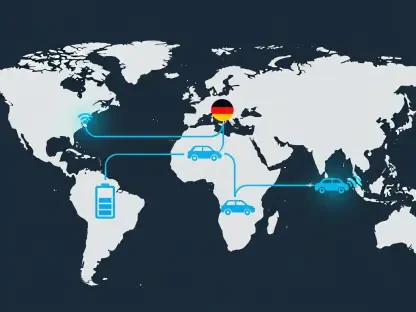Europe’s energy grid stands at a critical juncture as the wave of electrification sweeps across key sectors like transportation and heavy industry, placing unprecedented pressure on aging infrastructure. With ambitious decarbonization targets driving the shift toward renewable energy sources such as solar and wind, the risk of grid overload has become a tangible threat. EU Energy Commissioner Dan Jørgensen delivered a sobering message at the recent Flexcon conference in Brussels, hosted by the smart energy association smartEn: without urgent adaptive strategies, the system could face collapse. This dire warning has sparked intense debate among policymakers, grid operators, and industry leaders about whether flexibility—through demand-side management and innovative market mechanisms—can provide the lifeline needed to stabilize Europe’s energy networks. As demand from electric vehicles (EVs) and industrial electrification surges, the stakes could not be higher. This article delves into the challenges of grid strain, the transformative potential of flexibility, and the obstacles that must be overcome to secure a sustainable energy future.
The Looming Threat of Grid Overload
The rapid pace of electrification across Europe, while essential for meeting climate goals, is pushing the energy grid to its limits in ways that traditional infrastructure cannot handle. Commissioner Jørgensen has highlighted that the sheer volume of new demand—from EVs to electrified industrial processes—could overwhelm systems if left unchecked. Adding to this complexity is the integration of renewable energy, which, while environmentally beneficial, introduces volatility due to the intermittent nature of solar and wind power. Without a mechanism to balance these fluctuations, grid congestion and potential blackouts loom as real dangers, threatening not only economic stability but also the broader transition to a low-carbon future. The urgency to address this issue has never been clearer, as the consequences of inaction could ripple across the continent, disrupting daily life and derailing environmental progress.
Beyond the immediate risks, the limitations of conventional solutions exacerbate the problem, as simply expanding grid infrastructure is neither practical nor sustainable. Building additional power lines and substations often faces significant hurdles, including high costs, lengthy timelines, and physical constraints like limited land availability. Experts at the Flexcon conference emphasized that such brute-force approaches fail to address the dynamic nature of modern energy demands. Instead, the focus must shift to smarter, more adaptive strategies that can respond to real-time grid conditions. The strain caused by fluctuating renewable output and rising consumption patterns underscores the need for a paradigm shift, where managing demand becomes as critical as increasing supply. If Europe is to avoid systemic failures, innovative solutions must take precedence over outdated methods, paving the way for a more resilient energy framework.
Flexibility: A Smarter Path Forward
Flexibility emerges as a compelling solution to Europe’s energy challenges, offering a way to balance supply and demand without the prohibitive costs of grid expansion. At its core, flexibility involves leveraging demand-side resources, encouraging consumers—whether households with EVs or industries with adjustable operations—to shift usage to off-peak periods or even supply power back to the grid during high-demand moments. Aggregators play a pivotal role here, pooling resources like EV battery capacity to stabilize the system dynamically. This approach not only mitigates congestion but also maximizes the use of renewable energy, reducing waste. By aligning consumption with grid needs through price signals or direct incentives, flexibility transforms passive users into active participants in energy management, creating a more responsive and efficient network that can adapt to sudden shifts.
The potential benefits of adopting flexibility on a wide scale are nothing short of transformative, with both economic and environmental impacts that could reshape Europe’s energy landscape. A report from smartEn projects that by 2030, flexibility could generate annual savings exceeding €300 billion across the region, largely by reducing the need for costly infrastructure investments and optimizing energy distribution. Environmentally, it promises to prevent 15.5 TWh of renewable energy curtailment due to grid constraints and slash greenhouse gas emissions by 37.5 million tonnes each year, surpassing many existing targets. For consumers, the financial upside is equally impressive, with savings on electricity bills potentially reaching €530 annually for EV charging alone. These figures highlight flexibility as a dual-force strategy, addressing fiscal pressures while advancing climate objectives, and positioning it as a cornerstone for a sustainable energy future in Europe.
Hurdles on the Road to Implementation
Despite its promise, the path to integrating flexibility into Europe’s energy systems is fraught with regulatory challenges that hinder uniform progress across the continent. Variations in national policies create a fragmented landscape, where some countries, such as Czechia, restrict independent aggregators from accessing wholesale markets, while others, like Poland, have legal provisions but lack actionable frameworks. This inconsistency slows the deployment of flexible solutions, leaving certain regions more vulnerable to grid strain than others. Harmonizing regulations to create a cohesive market for demand-side resources remains a critical hurdle, as disparities undermine the ability to scale flexibility effectively. Addressing this patchwork of policies will require coordinated efforts among member states to ensure that all players can contribute to grid stability without facing unnecessary barriers.
Technical and operational obstacles further complicate the adoption of flexibility, demanding innovation and investment to overcome persistent limitations. Issues such as unreliable digital interfaces for energy management—think inconsistent application programming interfaces (APIs)—frustrate efforts to implement smart, cloud-based systems that are essential for real-time adjustments. Moreover, certain industries face inherent constraints; for instance, aluminum smelting requires continuous production, making demand adjustments economically unfeasible without risking severe disruptions. These challenges highlight the need for tailored technological solutions and robust support mechanisms to bridge gaps in capability. Overcoming such barriers is not merely a matter of funding but also of fostering collaboration between tech developers, grid operators, and industrial stakeholders to design systems that can accommodate diverse needs while maintaining reliability.
Tailoring Flexibility to Diverse Sectors
The potential for flexibility varies widely across industries, necessitating customized approaches to maximize benefits and address specific constraints. A detailed smartEn report reveals that sectors like pulp and paper hold immense promise, with the ability to offset up to 95% of operational costs through flexibility revenue by using innovations like electric boilers and steam accumulators to respond to price signals. Such adaptability allows these industries to reduce peak demand effectively, contributing to grid stability while maintaining profitability. However, not all sectors are equally positioned to capitalize on these opportunities, as structural and operational differences create uneven potential. Identifying and implementing sector-specific strategies will be key to ensuring that flexibility delivers widespread impact, rather than benefiting only a select few industries with inherent advantages.
In contrast, industries like aluminum face significant challenges in adopting flexibility due to the rigid nature of their production processes, which offer little room for demand adjustments without compromising output. Meanwhile, grid operators such as Belgium’s Elia are proactively planning for future needs, estimating a requirement for 6-7 GW of flexibility by 2036 and advocating for dynamic market models like intra-day trading to manage renewable energy volatility. These efforts signal a broader shift toward smarter energy systems, but they also reveal the complexity of aligning diverse stakeholders. Policymakers, industrial leaders, and operators must collaborate to develop frameworks that support flexibility across varied contexts, ensuring that even less adaptable sectors can contribute in meaningful ways. This tailored approach underscores the importance of innovation and cooperation in building a grid that can withstand the pressures of electrification.
Building a Resilient Energy Future
Reflecting on the discussions from the Flexcon conference, it became evident that flexibility has emerged as a linchpin in preventing the collapse of Europe’s energy grid under the weight of electrification and renewable integration. The stark warnings from Commissioner Jørgensen and the insights from industry experts painted a clear picture of the mounting risks, while also highlighting the transformative potential of demand-side solutions. Economic projections, such as the €300 billion in annual savings by 2030, alongside environmental gains like massive emission reductions, underscored the value of this approach. Yet, the journey has been marked by significant challenges, from regulatory fragmentation to technical limitations, which slow progress in critical areas. The collective resolve among stakeholders to address these issues offers a glimmer of hope, as tailored strategies begin to take shape across sectors.
Looking ahead, the focus must shift to actionable steps that can solidify flexibility as a cornerstone of Europe’s energy strategy. Harmonizing regulations across member states should be prioritized to create a unified market for demand-side resources, enabling seamless participation. Investment in reliable digital tools and infrastructure will be crucial to overcoming technical barriers, ensuring that systems can handle real-time adjustments without fail. Additionally, supporting industries with limited adaptability through incentives and innovative technologies can broaden the impact of flexibility, leaving no sector behind. Grid operators like Elia have already set a precedent with forward-thinking projections and market adaptations, which others can emulate. By fostering collaboration among policymakers, technologists, and industry leaders, Europe can build a resilient grid capable of meeting future demands while achieving decarbonization goals, turning a looming crisis into an opportunity for sustainable growth.









